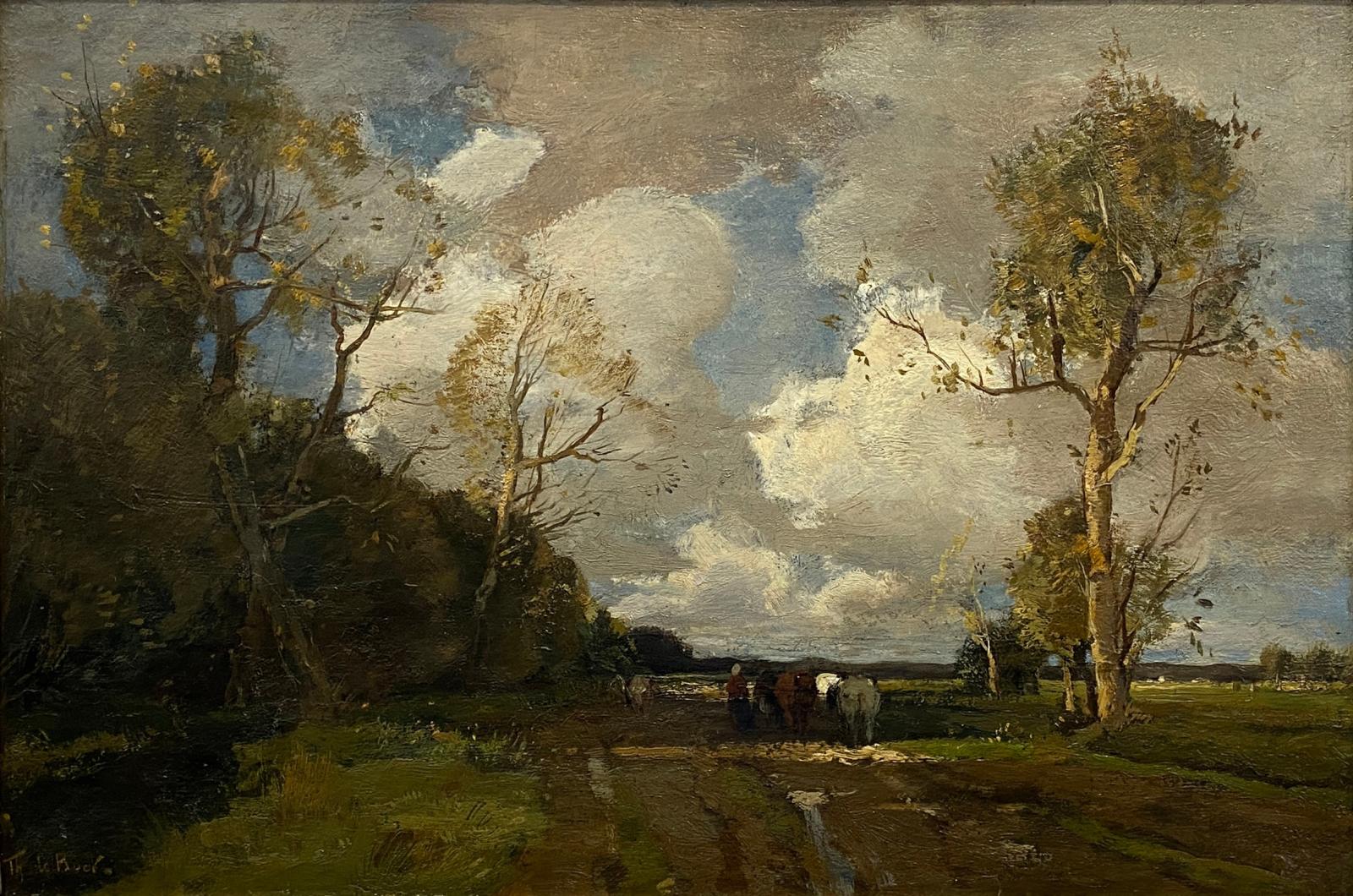artist
Théophile Emile Achille de Bock was born on January 14, 1851, in the Hague and died on November 22, 1904, in Haarlem. De Bock initially worked as a clerk for the Dutch Railway Company but turned to painting full-time when his job interfered with his artistic pursuits. He received training from notable landscape painters such as J.W. van Borselen, J.H Weissenbruch, and Jacob Maris in The Hague.
De Bock was a quick learner and hard worker. When he was 21 years old, his first painting was on display at the Living Masters exhibition in The Hague. From 1877 to 1881, de Bock rented a studio in The Hague, together with fellow artists Tony Offermans and Jozef Neuhuys, In France, De Bock met Vincent van Gogh during one of the study trips. The contact between them was further strengthened in the years 1881-1883 when Van Gogh stayed in The Hague. Later, de Bock played a key role in organizing the first retrospective exhibition of Vincent van Gogh’s work in 1892.
Description
Théophile de Bock, a Dutch painter of the Hague School, specialized in painting landscapes featuring low horizons and dynamic cloudy skies as we see here in Environs of the Hague. De Bock was influenced by the Barbizon School painters, especially Corot and Millet, whom he encountered during a visit to Paris and Barbizon in 1880. Like the Barbizon School, De Bock adopted the practice of painting outdoors, a technique Corot helped popularize. We can assume this painting is somewhere near the Hague as De Bock was keen on portraying the distinctive, local Dutch environment.
To capture the poetry of the landscape, De Bock balanced a realistic depiction with a more emotive, expressive style as we see here in the rendering of the “woolliness” of the trees – reflecting the Hague School’s preference for capturing the essence of the scene rather than its minutiae. Also, there are small human figures along with animals, to emphasize the proportions within the scene and to create a sense of scale, another technique employed by other Hague School artists.
De Bock’s muted color palette also aligned with the Hague School’s reputation as the “Gray School.” Here in Landscape, he features dusty greens, yellows, and grays which contribute to the overall somber and muted palette characteristic of the movement.
















